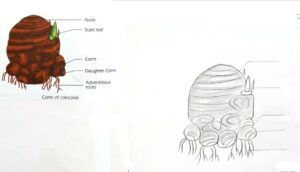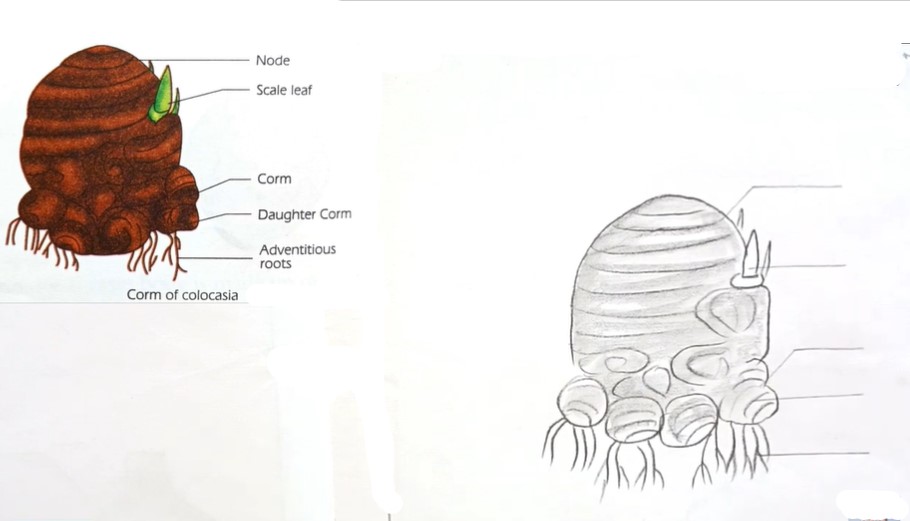The corm of cocoyam Physical Features and Characteristics
The corm of cocoyam, scientifically known as Xanthosoma sagittifolium, is a starchy underground tuber that belongs to the family Araceae. It is widely cultivated and consumed in various parts of the world, particularly in tropical regions. The corm is the swollen part of the plant’s stem located beneath the ground, serving as a nutrient storage organ.

Cocoyam is highly valued for its versatility in culinary applications and nutritional benefits. The corm has a brownish or purplish outer skin, enclosing creamy white or pale yellow flesh. It offers a mild and slightly nutty flavour, making it a popular ingredient in many traditional dishes.
Regarding nutritional composition, the cocoyam corm is a rich source of carbohydrates, dietary fibre, and essential minerals. It provides energy for the body and aids digestion due to its high fibre content. Additionally, cocoyam is low in fat and sodium, making it a healthier alternative to other starchy tubers.
One of the key nutritional benefits of cocoyam is its high dietary fibre content. Fibre is crucial in maintaining a healthy digestive system, promoting regular bowel movements, and preventing constipation. It also helps regulate blood sugar levels, lowers cholesterol, and contributes to weight management.
Cocoyam corms are used in a variety of culinary preparations across different cultures. Depending on the desired texture and flavour, they can be boiled, steamed, roasted, or fried. In some regions, cocoyam corms are grated and used to make traditional dishes like fufu, a staple food in many West African countries. Fufu is a dough-like food made by pounding boiled cocoyam corms and sometimes mixing them with other starchy tubers like cassava or plantains.
Apart from fufu, cocoyam corms can be sliced or diced and added to soups, stews, or stir-fries. They can also be made into chips or fries, providing a healthier alternative to potato-based snacks. Furthermore, cocoyam leaves are often used in cooking, either steamed or sautéed, and are highly nutritious.
Beyond its culinary uses, cocoyam also holds cultural significance in many communities. It is often included in traditional rituals, celebrations, and festive occasions. The plant has been cultivated for centuries, with different varieties adapted to different climates and growing conditions.
Also Read: Biology Specimen for WAEC 2023 and Answer
In conclusion, the corm of cocoyam is a versatile and nutritious tuber that has been an important food source in various parts of the world for generations. Its mild flavour and numerous health benefits make it a valuable ingredient in a wide range of dishes. Whether boiled, fried, or incorporated into soups and stews, cocoyam corms are cherished for their culinary and cultural significance.

